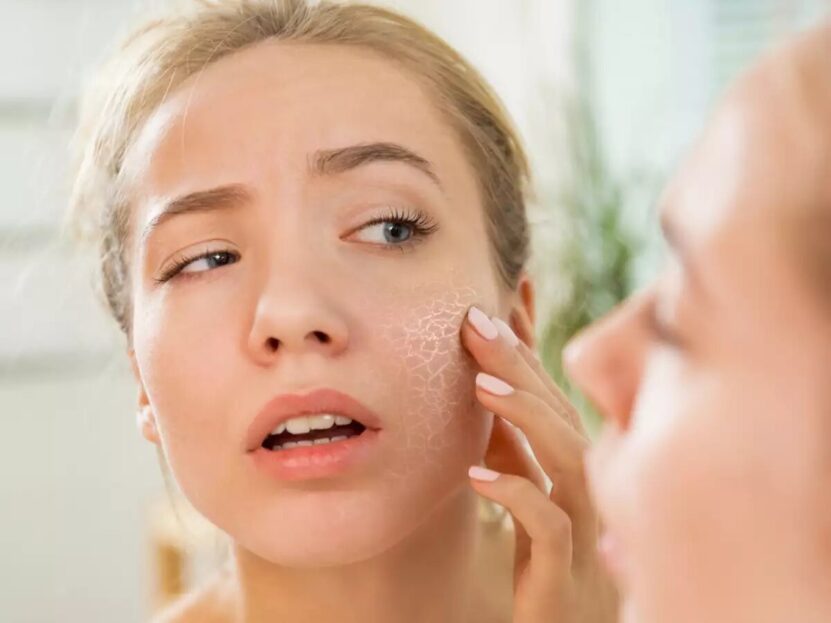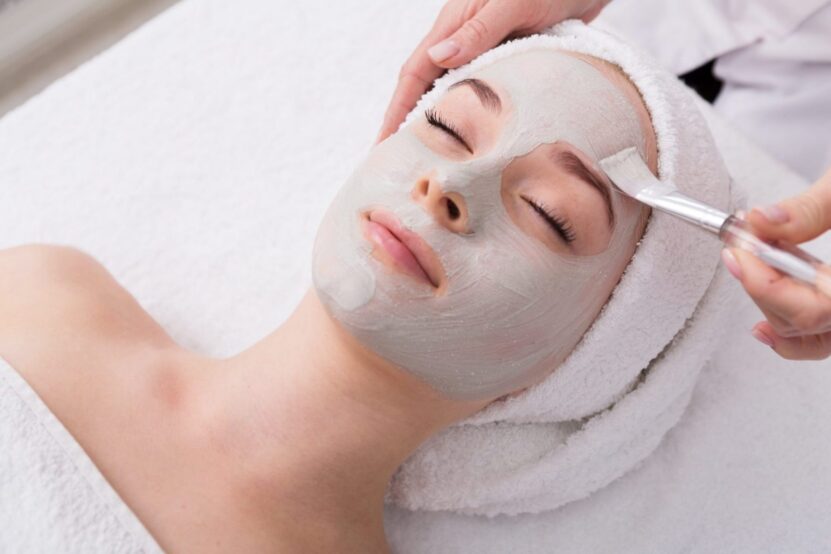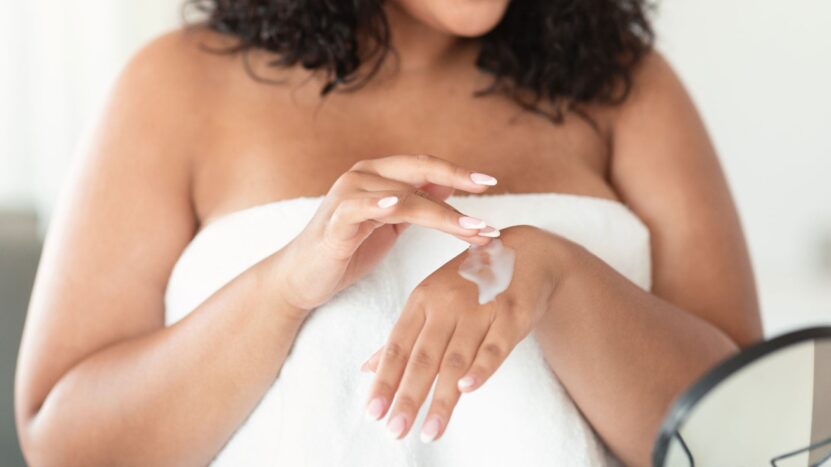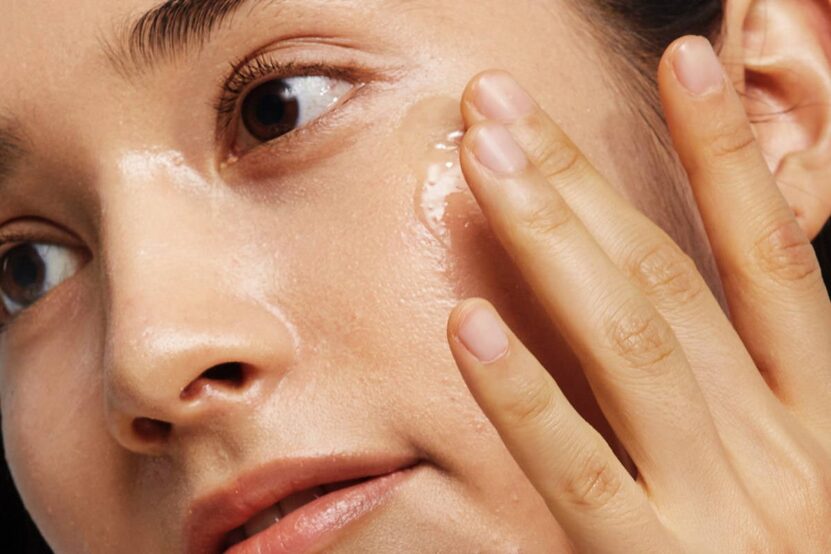Dry patches don’t show up for no reason. You follow your routine, yet flakes appear. The surface feels tight, irritated, and nothing seems to help.
This guide explains what’s really causing the dryness and how to restore lasting hydration.
Key Highlights
- Dryness often results from damage to the moisture barrier, not lack of water.
- Hot showers and harsh cleansers strip essential natural oils.
- Climate control systems pull moisture from your face without you realizing.
- Certain conditions mimic dryness but require specific treatment.
- Product overload often causes more harm than help.
- Restoring hydration means fixing what seals moisture in.
Habits That Strip Moisture Fast

It starts with your routine. One small misstep—too much cleansing, not enough protection—and the barrier weakens. That’s when flaking begins.
Too Hot, Too Often
A long, hot shower feels relaxing. But the heat erodes the protective layer that retains moisture. Over-washing, especially with foamy products, removes lipids that hold everything together.
Use lukewarm water. Stick to a mild, creamy cleanser once a day. And let your natural oils do their job.
Scrubs, Acids, and Overdoing It
Rough exfoliants and frequent acid treatments may smooth the surface short-term. But too many treatments create tiny gaps in your barrier, leading to increased moisture loss.
Stick to gentle formulas. Give your dermis time to recover. Skip anything that causes tightness or redness after use.
Don’t Skip Professional Support Like Facials

Facials at Moon Valley Med Spa offer more than relaxation. Their licensed experts create personalized sessions to restore hydration, ease irritation, and help your face retain moisture longer. If your home routine isn’t cutting it, treatments like these can create lasting results.
Environmental Triggers You Don’t Notice
It’s not just the weather—it’s the air inside your home.
Winter air lacks humidity. Heaters dry the room even more. In summer, AC units reduce water in the air, which quickly affects your face.
Subtle Yet Constant Damage
Indoor environments with less than 40% humidity create a perfect storm for flaking and rough texture. Bedrooms, living rooms, and even cars become dryness zones.
Place a small humidifier in the space where you sleep. Even adding moisture to one room can reduce tightness and roughness.
What If It’s Not Just Dryness?

Many common conditions start with redness and flaking. You might think it’s typical dryness—but the treatment needs to go deeper.
Conditions That Require More Than Moisturizer
- Eczema: Often itchy, inflamed, and triggered by stress or cold
- Psoriasis: Shows up as thick scales, sometimes mistaken for dry patches
- Seborrheic dermatitis: Flakes around the nose or eyebrows with redness
These issues affect how your dermis retains moisture. If patches don’t respond to gentle care, you need expert diagnosis and prescription-strength products.
Dehydrated or Dry—Not the Same Thing
Dry means your face lacks oil. Dehydrated means there’s not enough water. You can have both. You can also be oily and still lack hydration.
Signs You’re Dehydrated
- Dull appearance that no cream fixes
- Fine lines more visible
- Feels tight even when moisturized
Fixing this isn’t about layering more products. It’s about repairing your surface so it can hold hydration again.
The Right Way to Restore Moisture

It starts with routine and ingredients. Water alone won’t help unless something holds it in.
Smart Routine That Works
- Gentle cleansing
Skip foams. Go for a creamy, fragrance-free formula. - Add water-attracting ingredients
Hyaluronic acid and glycerin pull water to the surface. - Seal it in
Creams with ceramides, petrolatum, or squalane trap moisture. - Drink and protect
Stay hydrated internally. Avoid direct heat, cold wind, or long sun exposure. - Lock in everything
Apply products to damp—not dry—skin after washing.
Bad Habits That Make It Worse
You might be doing more harm without realizing it.
Common Mistakes to Avoid
- Using light lotions in harsh weather
- Not sealing in hydration after applying serums
- Sleeping in dry rooms without moisture in the air
- Layering too many actives at once
- Skipping SPF, which weakens the protective layer
A simpler approach often works better. Let your barrier heal without constant interference.
What to Eat for Better Moisture Balance

Your diet plays a key role in keeping the surface resilient.
Add Nutrients That Support Repair
- Omega-3s: From salmon, chia seeds, or flax
- Vitamin E: Found in nuts and leafy greens
- Zinc: Crucial for barrier strength
Cut back on sugar and processed snacks. They increase inflammation and damage the surface.
What to Look for in Moisturizers That Actually Work
Not every moisturizer can fix dryness. Some only create a temporary layer that disappears within hours. Others block your pores or worsen irritation. Choosing the right formula means knowing what your face actually needs.
Ingredients That Make a Difference

Skip anything labeled “lightweight” if your goal is deep hydration. Focus on products that include:
- Ceramides: These help rebuild the outer barrier, sealing in water.
- Glycerin and hyaluronic acid: These pull moisture into the upper layers of your face.
- Squalane and shea butter: These provide lasting protection without clogging pores.
- Panthenol (Vitamin B5): A gentle healer that calms redness and irritation.
Avoid alcohol-based products and avoid fragrance, especially if you’re dealing with sensitivity or flaking. Many drugstore lotions contain high water content but evaporate fast. What you want is a formula that traps water and keeps it there for hours.
How to Apply for Best Results
It’s not just what you use. It’s when and how.
- Apply to damp skin, not dry. This helps humectants like hyaluronic acid pull water into the barrier before sealing it.
- Layer smartly: Use a water-based serum first, then a richer cream on top. This gives you both hydration and protection.
- Don’t rub too hard. Patting the product in avoids breaking fragile surface layers.
- Use different products at night. Choose something thicker before bed to help your face recover while you sleep.
Hydration doesn’t happen in one step. It’s about stacking effective steps that support each other. Think of it as layers of defense, not just one product saving the day.
When Should You Switch Products?
Even a good product can stop working if your environment changes. What helps during spring may not work during winter. If your face starts feeling tight again after weeks of improvement, reassess.
Here’s when you should consider switching:
- Weather has changed: Cold air requires heavier products
- You’ve started using actives: Retinol and acids can dry out your barrier
- Skin looks dull even with regular moisturizing
- Your usual lotion stings or causes redness
Don’t wait for flakes to return. Act early when signs of dehydration start. Use your products as tools—rotate them based on how your surface feels that week.
Treatments That Speed Recovery

Some cases need more than creams. Medical treatments can speed up recovery, especially when your skin doesn’t respond to over-the-counter fixes.
Hydrafacials and microneedling with hydration serums rebuild the surface and reinforce your natural defenses. When done by trained professionals, these treatments restore glow and smoothness fast.
The Real Fix Isn’t a Product
Your face is reacting to damage, and dryness is just the signal.
The solution is repair—not overload. Fix your habits. Use fewer, better products. Stay consistent and patient.
You don’t need to chase glow. You need to protect it.

